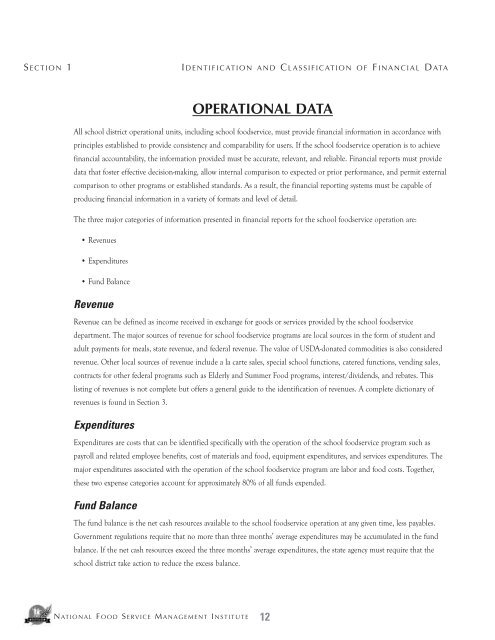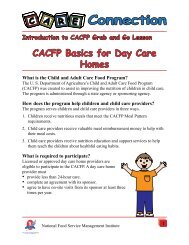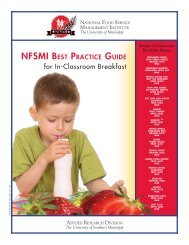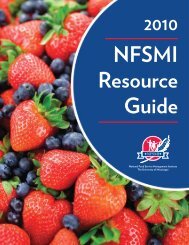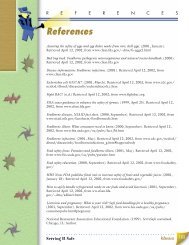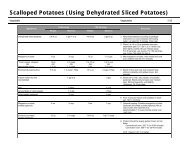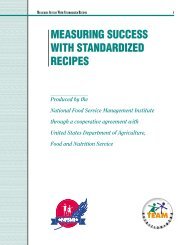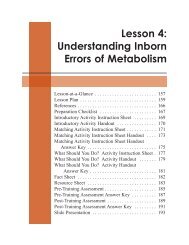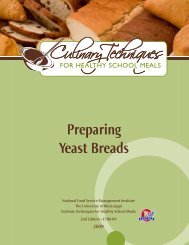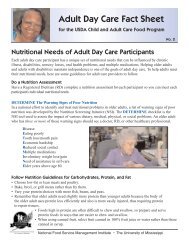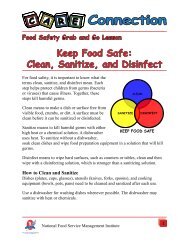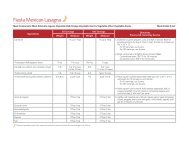financial management information system - National Food Service ...
financial management information system - National Food Service ...
financial management information system - National Food Service ...
You also want an ePaper? Increase the reach of your titles
YUMPU automatically turns print PDFs into web optimized ePapers that Google loves.
S ECTION 1IDENTIFICATION AND C LASSIFICATION OF F INANCIAL D ATAOPERATIONAL DATAAll school district operational units, including school foodservice, must provide <strong>financial</strong> <strong>information</strong> in accordance withprinciples established to provide consistency and comparability for users. If the school foodservice operation is to achieve<strong>financial</strong> accountability, the <strong>information</strong> provided must be accurate, relevant, and reliable. Financial reports must providedata that foster effective decision-making, allow internal comparison to expected or prior performance, and permit externalcomparison to other programs or established standards. As a result, the <strong>financial</strong> reporting <strong>system</strong>s must be capable ofproducing <strong>financial</strong> <strong>information</strong> in a variety of formats and level of detail.The three major categories of <strong>information</strong> presented in <strong>financial</strong> reports for the school foodservice operation are:• Revenues• Expenditures• Fund BalanceRevenueRevenue can be defined as income received in exchange for goods or services provided by the school foodservicedepartment. The major sources of revenue for school foodservice programs are local sources in the form of student andadult payments for meals, state revenue, and federal revenue. The value of USDA-donated commodities is also consideredrevenue. Other local sources of revenue include a la carte sales, special school functions, catered functions, vending sales,contracts for other federal programs such as Elderly and Summer <strong>Food</strong> programs, interest/dividends, and rebates. Thislisting of revenues is not complete but offers a general guide to the identification of revenues. A complete dictionary ofrevenues is found in Section 3.ExpendituresExpenditures are costs that can be identified specifically with the operation of the school foodservice program such aspayroll and related employee benefits, cost of materials and food, equipment expenditures, and services expenditures. Themajor expenditures associated with the operation of the school foodservice program are labor and food costs. Together,these two expense categories account for approximately 80% of all funds expended.Fund BalanceThe fund balance is the net cash resources available to the school foodservice operation at any given time, less payables.Government regulations require that no more than three months’ average expenditures may be accumulated in the fundbalance. If the net cash resources exceed the three months’ average expenditures, the state agency must require that theschool district take action to reduce the excess balance.N ATIONAL F OOD S ERVICE M ANAGEMENT I NSTITUTE 12


